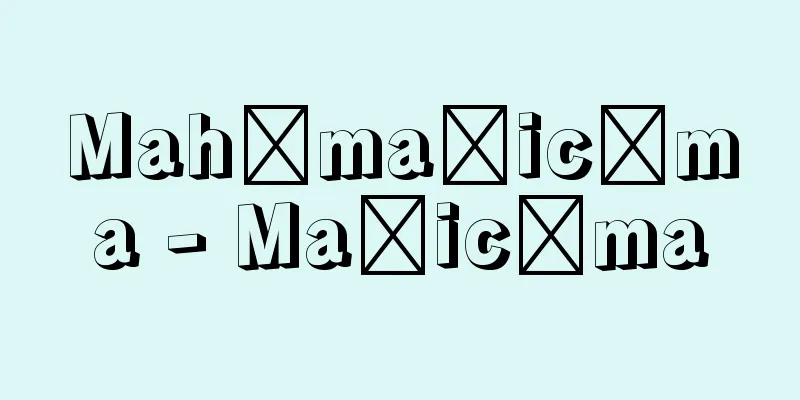Genetic Engineering (Recombinant DNA)

|
The body of a gene is a molecule called DNA. Therefore, DNA can be extracted from the cells of any organism, treated as a simple substance, and subjected to various manipulations. Although the sequence of nucleotides, which is the information contained in genes, differs between different types of organisms, once extracted from the cell, the DNA has the same structure. It is possible to recombine the DNA of different organisms to create hybrid DNA that does not exist in nature. Hybrid DNA created in this way is called recombinant DNA. To create recombinant DNA, first, DNA is cut at a specific sequence using an enzyme called a restriction enzyme so that the end structures of the DNA, that is, the cut ends, are the same. The two types of DNA with the same cut ends are mixed and relinked with an enzyme called ligase. Recombinant DNA with the two types of DNA ligated cannot be multiplied as it is, so it must be returned to the cell. To multiply recombinant DNA within a cell, a special DNA called a vector is used as one of the DNA strands. The vector must have a sequence for replicating DNA within the cell and a gene (such as an antibiotic resistance gene) for selecting the incorporated recombinant DNA. DNA from a different organism (foreign DNA) that is artificially linked to a vector is similarly multiplied by the vector replicating within the cell. The DNA of an organism cut with a restriction enzyme is divided into various fragments of different sizes, but after binding to the vector, it enters different cells. When the cells that have received the recombinant DNA are multiplied to form colonies (clusters derived from a single cell), the foreign DNA in each colony will be different in size and type. Through genetic manipulation using recombinant DNA, it is now possible to separate the DNA of any organism, including humans, into small enough pieces that can be studied individually. Source: Houken “Sixth Edition Family Medicine Encyclopedia” Information about the Sixth Edition Family Medicine Encyclopedia |
|
遺伝子の本体はDNAという分子です。したがってどのような生物の細胞からでもDNAを取り出して、単なる物質として扱い、いろいろな操作を加えることができます。生物の種類が異なると遺伝子のもつ情報であるヌクレオチドの配列は違っていますが、細胞から取り出してしまえばDNAとしては同じ構造をもっています。異なる生物のDNA同士をつなぎ直して自然界には存在しない雑種のDNAをつくることが可能です。こうしてできた雑種のDNAを組み換えDNAと呼んでいます。 組み換えDNAをつくるには、まずDNAの末端の構造、つまり切り口が同じになるように、制限酵素という酵素で特定の配列をもった部分でDNAを切断します。切り口のそろった2種類のDNAを混ぜ合わせ、リガーゼという酵素で再び結びつけます。2種類のDNAが結合した組み換えDNAは、そのままでは増やすことができないので、細胞のなかにもどしてやります。 細胞内で増やすために、組み換えDNAをつくる時の一方のDNAはベクターと呼ばれる特殊なDNAを用います。ベクターは細胞のなかでDNAを複製するための配列と、取り込んだ組み換えDNAを選び出すための遺伝子(たとえば抗生剤に抵抗性の遺伝子)をもっている必要があります。ベクターに人為的に結合された異なる生物由来のDNA(外来DNA)は、ベクターが細胞内で複製することによって同様に増殖します。制限酵素で切断したある生物のDNAは大きさの異なるいろいろな断片になっていますが、ベクターに結合したあと別々の細胞に入り込みます。組み換えDNAを受け取った細胞を増殖させコロニー(ひとつの細胞由来の集合体)を形成させると、個々のコロニーのもつ外来DNAは大きさも種類も異なることになります。 このように組み換えDNAを用いた遺伝子操作によって、ヒトを含むどのような生物由来のDNAも、研究できる小さなサイズのDNAに分けて個別に取り出すことができるようになっています。 出典 法研「六訂版 家庭医学大全科」六訂版 家庭医学大全科について 情報 |
<<: Gene Frequency - Idensihind
Recommend
Organogenesis
... When a substance is ingested by a pregnant wo...
Wisdom - H
Sagesse (original title, French: Sagesse ) is a co...
"Iroha Kana Yotsuya Kaidan" - Iroha Kana Yotsuya Kaidan
...It is commonly known as "Yotsuya Kaidan&q...
Rausu [town] - Rausu
A town in Menashi County, Hokkaido. It occupies th...
The origins of the mountains
This is a record of the origins and history of Mou...
Support - Edge
〘 noun 〙 (also "Fuji") ① (━ suru) To giv...
Characidae; characins
A family of fish in the order Characidae. Most are...
Fernandez, E.
… [Mexican Movie] In 1931, a group of Soviet film...
National Chronicle - Kokki
A historical book compiled by Prince Shotoku and S...
Carbamic nitrile
...The chemical formula is NCNH2 . It is carbamic...
Ulaan Had (English spelling)
…Its name comes from the reddish-brown mountain o...
Zannusi, K. (English spelling) ZannusiK
...Masterpieces such as Andrzej Wajda's (1926...
Virucidal
... refers to a drug that robs bacteria of their ...
Through meat - Kanniku
...In the pleasure quarters of the Edo period, pe...
Takasu [Village] - Takasu
A village in Gujo County in northwestern Gifu Pref...









![Bursa of Fabricius (English spelling) bursa Fabricii [Latin]](/upload/images/67cca9198c504.webp)